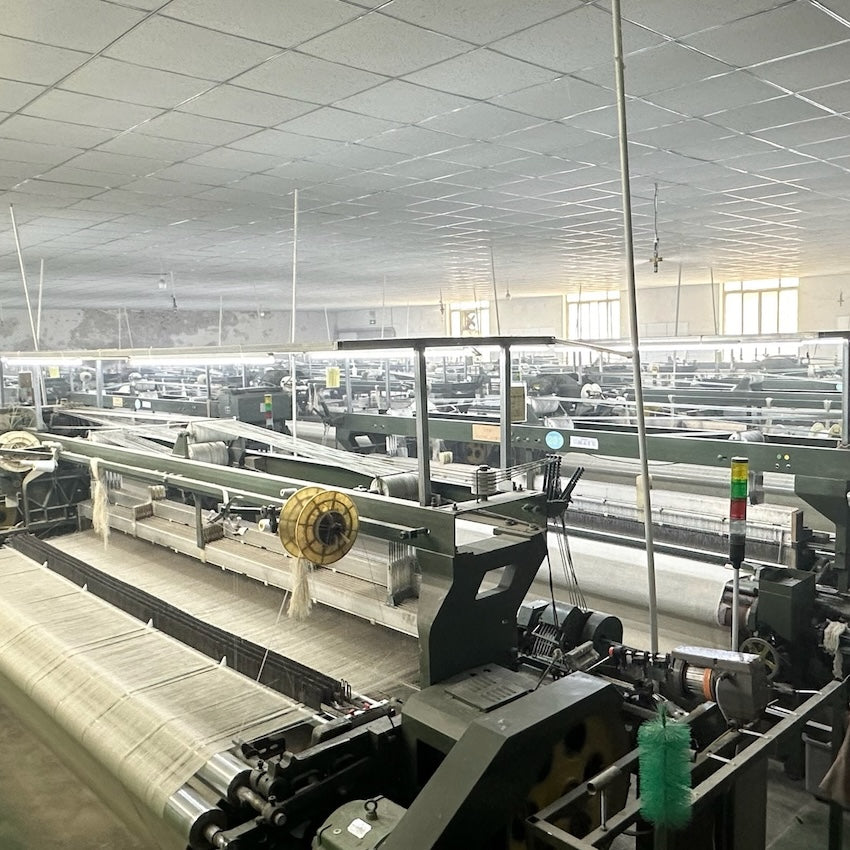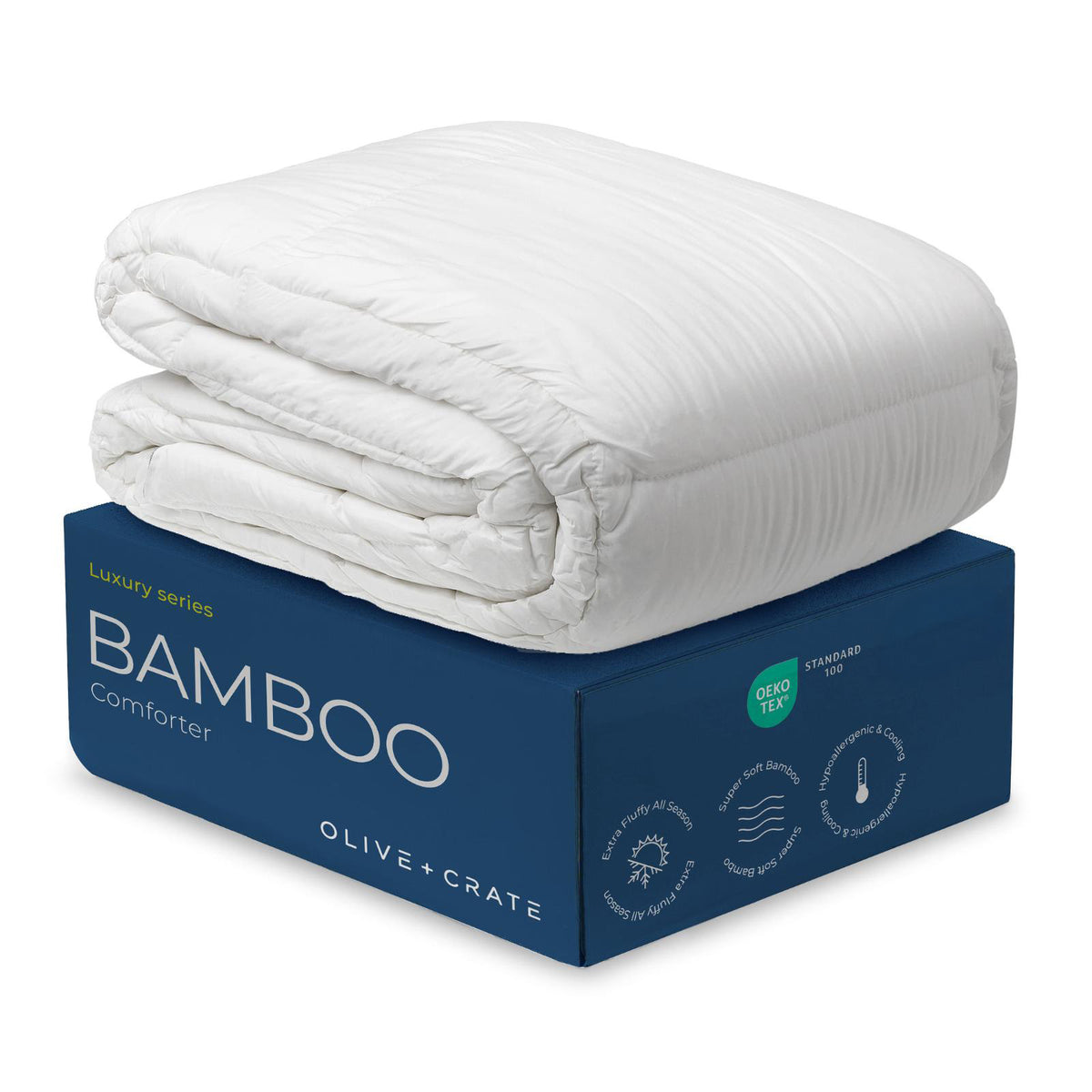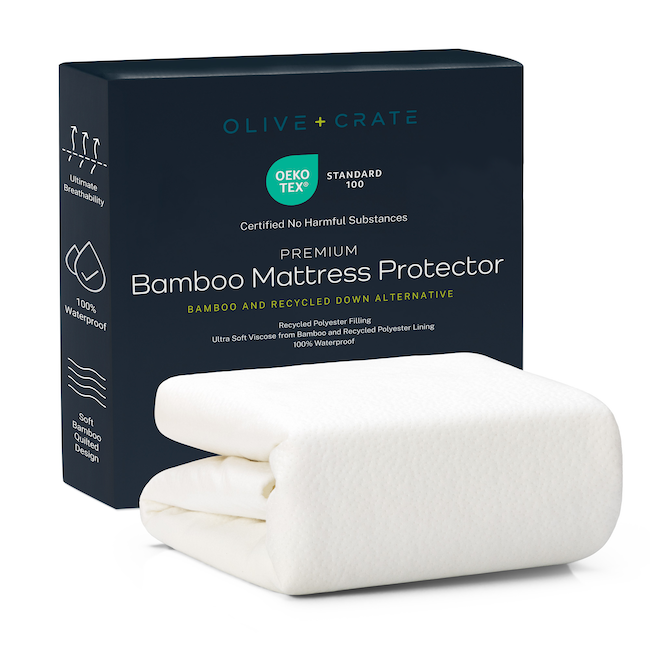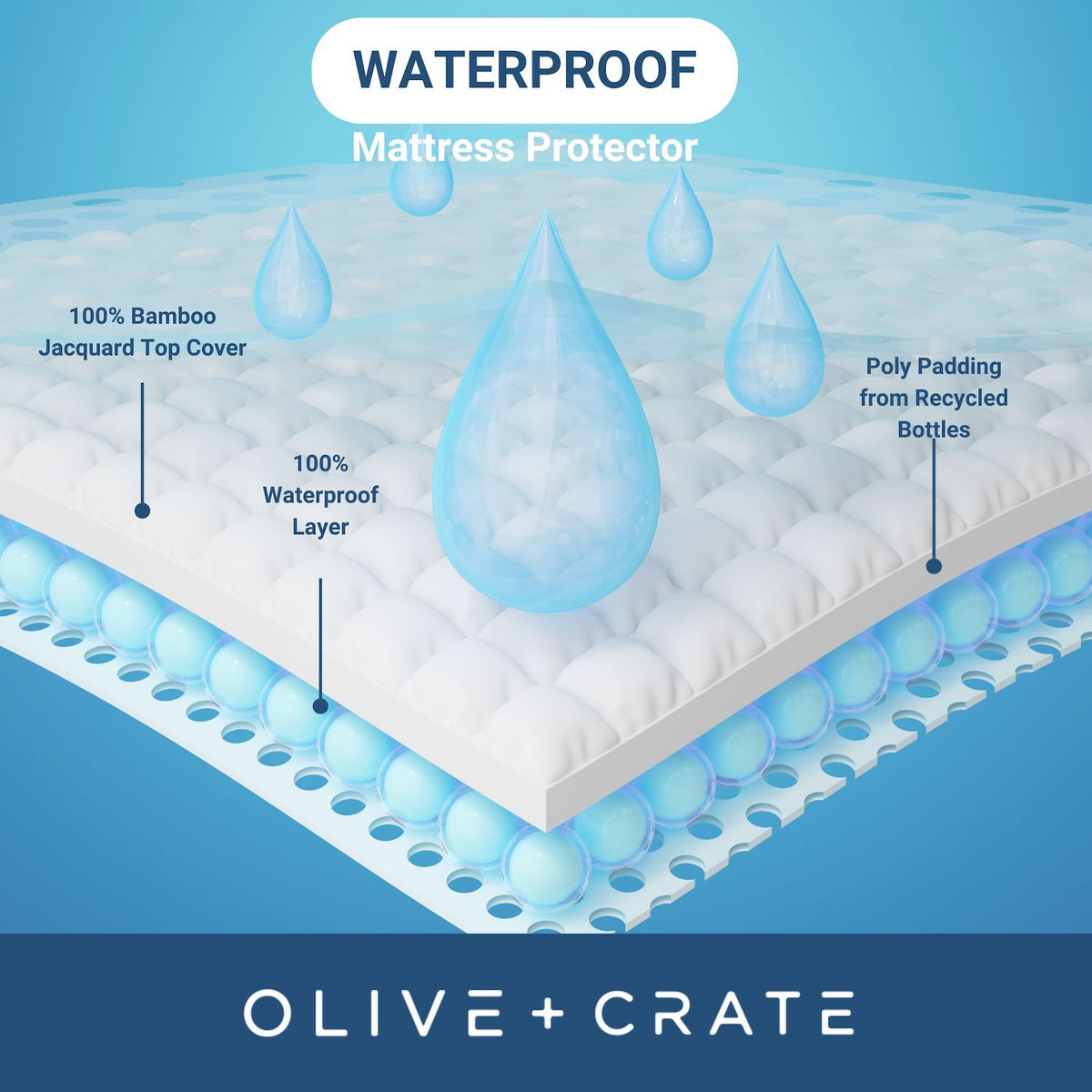Why Your Current Bedding Might Be Sabotaging Your Health
Non toxic bedding, think about it: you spend roughly one-third of your life in bed. But what if your sanctuary for sleep is secretly impacting your health? Conventional bedding is often treated with various chemicals that can significantly affect your well-being. While resting, you might be unknowingly exposed to substances that disrupt your sleep and potentially impact your long-term health.
Hidden Chemicals in Your Bedding
Common culprits include flame retardants, formaldehyde, and synthetic dyes. Flame retardants, added to meet flammability standards, can release volatile organic compounds (VOCs). These VOCs have been linked to respiratory problems and hormone disruption.
Formaldehyde, used in textile processing, can irritate skin and cause allergies. Synthetic dyes, while visually appealing, can contain heavy metals and other harmful substances absorbed through your skin.
Who's Most at Risk?
While these chemicals can affect everyone, some groups are particularly vulnerable. Children, with their developing immune systems, are more susceptible to the adverse effects of chemical exposure. Pregnant women also need to be cautious, as these chemicals could potentially affect fetal development.
Individuals with chemical sensitivities might experience stronger reactions to even small amounts of these substances. Choosing non-toxic bedding creates a safer sleep environment for these vulnerable groups.
Spotting Greenwashing Tactics
The increasing demand for safer bedding has unfortunately led to a rise in "greenwashing." Companies may use terms like "natural" or "eco-friendly" without adhering to strict standards. However, genuinely non-toxic bedding is certified by organizations like OEKO-TEX and GOTS.
These certifications verify that products meet strict criteria for chemical safety and sustainable production. Look for these certifications to ensure you're investing in non-toxic bedding, protecting your health, and supporting responsible manufacturing. This knowledge helps you make informed choices and prioritize your well-being.
The Explosive Growth Behind The Non Toxic Bedding Sleep Revolution

Growing concerns about harmful chemicals in conventional bedding are prompting a significant change in consumer choices. This isn't just a temporary trend; it's a fundamental shift in how people view their sleep environment. More and more families are searching for non toxic bedding to create a healthier and more restful sleep experience.
Market Drivers and Consumer Insights
Several key elements are fueling this increasing demand. Ready access to information about the potential health consequences of chemical exposure empowers consumers to make informed choices.
In addition, the rising interest in sustainable and ethical consumption plays a significant role. Consumers are actively looking for products that match their personal values.
The Global Organic Bedding Market
The global organic bedding market offers a clear illustration of this shift. Valued at USD 531.3 million in 2024, this market is projected to reach USD 942 million by 2033. This represents a CAGR of over 6.24%. This growth is driven by increased consumer awareness of the health and environmental benefits of organic materials, which are grown without synthetic pesticides, fertilizers, or GMOs. Explore organic bedding market growth for more detailed statistics.
Innovation and Product Development
The demand for nontoxic bedding is motivating manufacturers to innovate. Companies are investing in research and development to create safer, high-quality products. These products must meet these new consumer needs.
This includes exploring new materials and production methods. The goal is to minimize environmental impact while focusing on both comfort and durability.
The Future of Non Toxic Bedding
The focus on nontoxic sleep isn't a short-lived phenomenon. It signals a permanent change in how we view sleep and overall wellness. As awareness builds, we can anticipate greater product availability and increased competition. We can also expect continued innovation in the nontoxic bedding market. Ultimately, this will offer consumers seeking healthier sleep solutions more choices and greater value.
Decoding The Best Materials For Chemical-Free Sleep
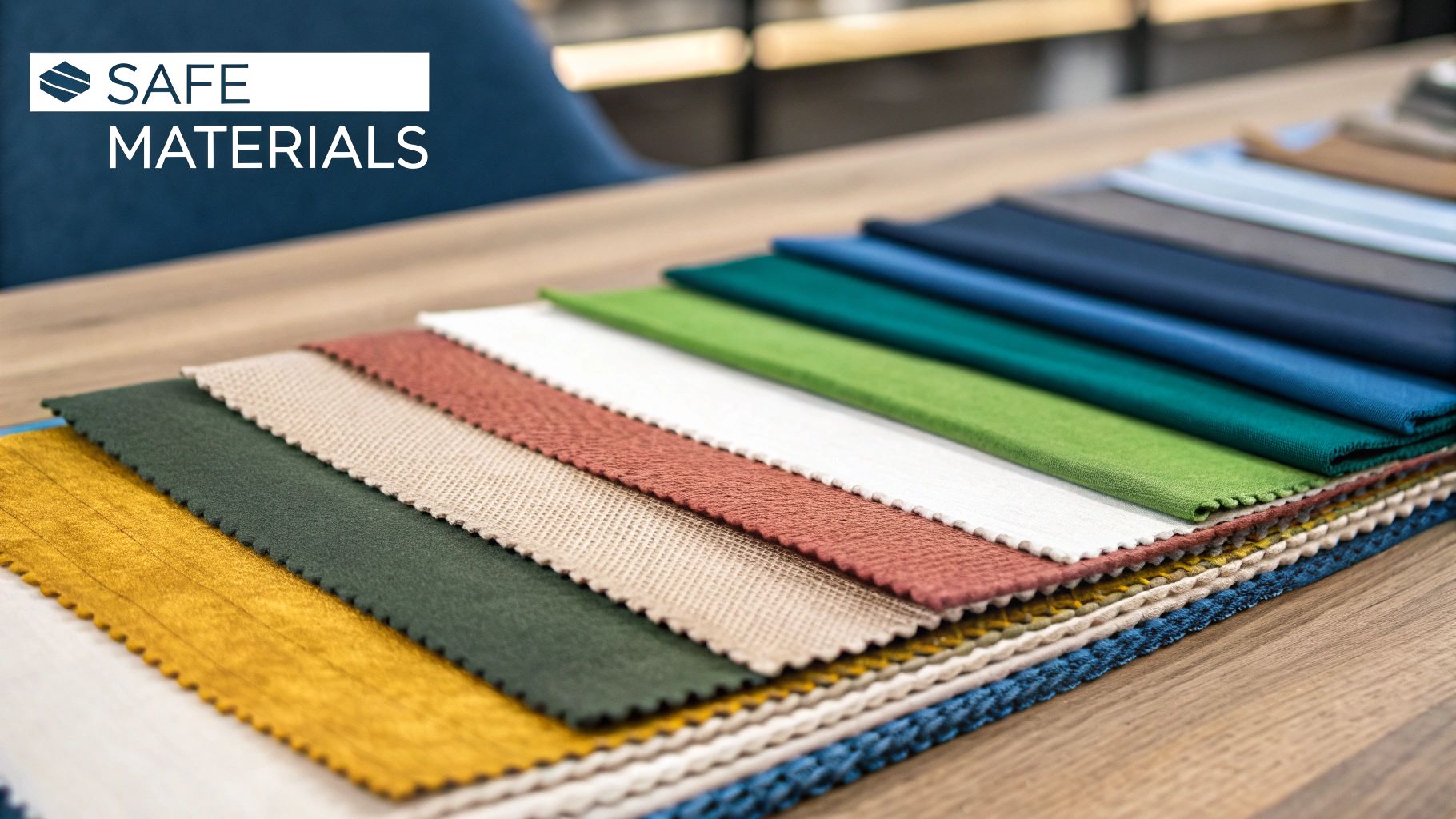
The demand for nontoxic bedding is on the rise, leading to a surge in "natural" options. But buyer beware: not everything labeled "natural" is created equal. Careful consideration is essential when choosing truly safe and comfortable bedding. This section explores the leading contenders, highlighting their advantages and disadvantages.
Organic Cotton: A Breathable Classic
Organic cotton is a perennial favorite for nontoxic bedding. Known for its breathability, softness, and durability, it's an excellent choice for those with sensitive skin. Because it's grown without harmful pesticides and insecticides, organic cotton reduces exposure to chemicals while sleeping.
Bamboo: Luxurious and Sustainable
Bamboo, a fast-growing renewable resource, offers another great option. It creates incredibly soft and luxurious bedding. Bamboo fabric is also naturally moisture-wicking, a bonus for hot sleepers. For more on sustainable fabrics, check out this article: Why Tencel is Better for the Environment Than Cotton and Linen.
Natural Latex: Supportive and Eco-Friendly
Derived from rubber trees, natural latex offers exceptional support and longevity. It's naturally hypoallergenic and resistant to dust mites and mold, a significant advantage for allergy sufferers. Natural latex also provides superior pressure point relief, promoting restful sleep.
Wool: Temperature Regulating and Naturally Antimicrobial
While less common, wool bedding has unique benefits. It naturally regulates temperature, keeping you warm in winter and cool in summer. Wool is also naturally antimicrobial and resistant to dust mites, a plus for those with allergies.
Certifications and Processing: Key Considerations
Organic bedding made from materials like cotton, linen, wool, and silk is particularly popular with people who have sensitive skin or allergies. These natural fibers are less likely to cause irritation or allergic reactions. The shift towards sustainable and healthier homes is especially noticeable in North America. Favorable government policies and increased disposable income are driving demand. Learn more about the organic bedding market. However, even natural materials can be compromised during processing.
Look for certifications like GOTS (Global Organic Textile Standard) and OEKO-TEX Standard 100. These certifications guarantee that the materials and production processes meet strict environmental and social standards, including minimal chemical use. Understanding material properties helps you select the best nontoxic bedding for your needs.
Market Forces Reshaping How We Think About Safe Sleep
Consumer priorities are changing, and the bedding industry is adapting. The demand for non toxic bedding is increasing rapidly, driven by a growing awareness of how our sleep environment affects our overall health. This shift is part of a broader trend toward health-conscious and environmentally sound consumer choices.
The Rise of Nontoxic Bedding
This rising demand isn’t just a passing fad; it represents a significant shift in consumer behavior. People are now more aware of the potential harm from chemicals found in conventional bedding. For example, many understand the negative health effects of exposure to pesticides and flame retardants. This awareness leads them to actively seek safer options.
The increasing emphasis on sustainability also plays a vital role. Consumers are looking for products made with eco-friendly materials and ethical manufacturing practices. This includes nontoxic bedding made with organic and sustainably sourced materials. The combined focus on personal and environmental health is fueling the growth of this market.
Market Growth and Projections
This expanding market is demonstrating considerable growth. According to Grand View Research, the global organic bedding market reached USD 532.3million in 2024. It is projected to grow at a CAGR of 5.4% from 2024 to 2030. This data indicates strong and continued global demand. The popularity of organic bedding is largely due to its health benefits, as consumers become more aware of the risks associated with chemically treated bedding. This steady growth has substantial implications for product availability, pricing, and continued innovation within the industry.
Regional Differences and Consumer Preferences
While the general trend is upward, regional variations exist in the rate of non toxic bed sheets adoption. Some areas, especially those with a strong environmental focus and higher disposable incomes, show faster growth. This means access to these options can differ based on location.
Consumer preferences also heavily influence product development. Demand for specific materials, features, and prices affects what manufacturers produce. For example, the preference for softer, more breathable fabrics drives innovation in natural and organic materials. This market dynamic benefits consumers through a wider selection of high-quality, nontoxic bedding choices at competitive prices. As this market continues to expand, we can anticipate even more options, potentially lower prices, and ongoing improvements in materials and manufacturing.
Your Complete Nontoxic Materials Comparison Guide
Choosing the right nontoxic bedding can feel overwhelming. This guide breaks down the pros and cons of different materials, helping you navigate certifications and marketing jargon to find what truly fits your needs. We'll cover everything from durability and care to comfort and cost.

The infographic above illustrates data on global non toxic bedding certifications, consumer prioritization of these certifications, and the market growth rate for certified bedding. The demand for certified nontoxic bedding is on the rise, reflecting increased consumer awareness and driving market expansion.
To help you make an informed choice, we’ve compiled a comparison table highlighting the key characteristics of popular nontoxic bedding materials. This table will allow you to quickly assess which material aligns best with your priorities, whether it’s breathability, durability, or budget.
Non Toxic Bedding Materials: Complete Comparison Guide
| Material | Breathability | Durability | Hypoallergenic | Care Level | Price Range |
|---|---|---|---|---|---|
| Organic Cotton | Excellent | Good | Yes | Easy | $$ |
| Bamboo | Excellent | Moderate | Yes | Easy | $$$ |
| TENCEL | Excellent | High | Yes | Easy | $$$ |
| Linen | Excellent | High | Yes | Moderate | $$$$ |
| Natural Latex | Moderate | High | Yes | Moderate | $$$$ |
This table offers a clear overview of how each material performs across various factors, making it easier to compare and contrast your options. Now, let’s delve into the specifics of each material.
Organic Cotton: The Breathable Staple
Organic cotton is a favorite for its breathability and soft texture. Grown without harmful pesticides, it's an excellent choice for sensitive skin. Organic cotton is also relatively easy to care for and generally affordable. However, it may not be as durable as other nontoxic materials.
Bamboo: Luxurious and Cooling
Bamboo bedding is known for its luxurious feel and excellent moisture-wicking capabilities, making it perfect for hot sleepers. While generally durable, bamboo can be pricier than organic cotton. For more information about the sleep benefits of eucalyptus—a close relative of bamboo—check out this article: How Eucalyptus Bedding Can Impact Your Sleep.
Tencel: The Durable Choice
TENCEL™ fabric is celebrated for its exceptional durability and natural resistance to mold and mildew. It has a more luxurious feel compared to bamboo or organic cotton, it offers long-lasting performance and often sits in a higher price range.
Linen: Naturally Luxurious and Durable
Linen combines durability and breathability, becoming softer with every wash. This premium material offers a luxurious sleep experience, but comes at a higher cost and requires more care than other options. Linen is often the most expensive choice on this list.
Natural Latex: Supportive and Hypoallergenic
Natural latex provides excellent support and pressure relief, making it ideal for those seeking targeted comfort. Naturally hypoallergenic and resistant to dust mites, natural latex is a good investment for allergy sufferers. However, it’s heavier, less breathable, and more expensive than other nontoxic options. Choosing the right bedding involves carefully weighing these factors to find the perfect balance for your individual needs and preferences.
Where Nontoxic Bedding Fits In The Bigger Picture
Understanding how non toxic bedding fits into the larger home furnishing market gives us valuable insights into its availability, growth, and what's next. This specialized segment is gaining momentum, and it's important to understand its place within the overall bedding industry.
Nontoxic Bedding vs. Conventional Bedding
Both conventional and nontoxic bedding aim for a comfortable night's sleep, but their approaches differ greatly. Conventional bedding often focuses on affordability and looks, sometimes overlooking health and environmental concerns.
Non toxic bedding, on the other hand, prioritizes materials and production methods that minimize chemical exposure and reduce environmental harm. This difference in philosophy reflects a shift in consumer priorities.
For example, let's look at market size. The global bedding market (including both conventional and nontoxic options) was valued at US$45.47 billion in 2025. It's projected to grow annually at 3.66% through 2029. However, the nontoxic bedding niche is expanding much faster.
The sector specializing in sustainable, nontoxic materials is experiencing even more rapid growth. Consumers are increasingly choosing bedding that supports their well-being and the environment, free from harmful additives. More detailed statistics can be found here. This difference in growth rates highlights the increasing consumer demand for safer and healthier sleep.
Driving Forces Behind the Growth
Several factors contribute to the nontoxic bedding market's expansion. Growing awareness of potential health risks linked to chemicals in conventional bedding has led many to seek alternatives.
The increasing focus on sustainability further fuels this trend, boosting demand for eco-friendly and responsibly sourced materials. This shift in consumer behavior has created a ripple effect throughout the industry.
Future Trends and Implications
The current growth trajectory suggests a continued expansion of nontoxic bedding. With rising demand, we can anticipate further innovation in materials, production, and design. This includes exploring new materials and refining existing ones to enhance performance and minimize environmental impact. You might be interested in: Got Allergies? Here Are The Top 9 Tips For Making Your Bedroom Hypoallergenic.
What This Means for Consumers
Ultimately, the expanding nontoxic bedding market benefits consumers. Increased competition and innovation lead to more choices, better quality, and potentially lower prices. This makes healthy sleep more attainable for everyone.
For example, companies like Olive + Crate offer premium, sustainable bedding made from TENCEL™ eucalyptus fiber. This plant-based fabric provides an eco-friendly alternative to conventional materials. It’s a prime example of how brands are responding to the demand for safe, high-quality sleep solutions. As consumer preferences continue to shape the market, we can expect even more advancements in nontoxic bedding technology and availability.
Your Strategic Action Plan For Transforming Your Sleep Space

Want to create a healthier, more restful sleep sanctuary? This practical guide offers a step-by-step approach to transitioning to non toxic bedding, complete with realistic timelines and budget-friendly tips. We'll help you prioritize your purchases, plan your spending, and ultimately enjoy the many benefits of chemical-free sleep.
Prioritizing Your Bedding Upgrade
Switching to nontoxic bedding doesn't have to happen all at once. It's perfectly fine to take a gradual approach. Start by prioritizing the items that come into the most direct contact with your skin.
- Pillowcases and Sheets: These make the biggest initial impact since they touch your skin and hair for hours every night.
- Comforter/Duvet Cover: Next up is your comforter or duvet cover. Replacing this larger item significantly reduces your overall chemical exposure.
- Mattress Pad/Topper: A nontoxic mattress pad or topper adds another layer of protection and comfort, especially if you plan on transitioning to a nontoxic mattress down the line.
- Mattress and Pillows: Mattresses and pillows represent the biggest investment in your sleep space. These can be replaced last as you build your nontoxic bedding collection.
To help visualize the transition, we've created a handy checklist and timeline. This table outlines a priority-based shopping guide, showing estimated costs and a suggested timeline for a complete bedroom transformation.
Nontoxic Bedding Shopping Checklist and Timeline
| Priority Level | Bedding Item | Estimated Cost | Health Impact | Timeline |
|---|---|---|---|---|
| High | Pillowcases & Sheets | $50-200 | Significant improvement | Immediately |
| Medium | Comforter/Duvet Cover | $100-300 | Noticeable improvement | 1-3 months |
| Medium | Mattress Pad/Topper | $50-150 | Added protection | 3-6 months |
| Low | Mattress & Pillows | $300-1500+ | Long-term health benefits | 6-12+ months |
This timeline offers a flexible framework. Feel free to adjust it based on your individual budget and needs. Replacing your bedding over time makes the switch to nontoxic materials manageable and less overwhelming.
Care and Maintenance of Nontoxic Bedding
Taking good care of your bedding helps it last longer. Always follow the manufacturer’s instructions for washing and drying.
- Natural fibers: Organic cotton and linen often benefit from gentler wash cycles and lower drying temperatures.
- Natural latex: Requires specific care instructions to prevent deterioration.
Proper care protects your investment and maximizes the benefits of your nontoxic bedding.
Recognizing When To Replace Your Bedding
It's important to know when it’s time to replace your bedding. Even high-quality, nontoxic materials have a lifespan. Look out for these telltale signs:
- Visible wear and tear: Rips, stains, or thinning fabric are all clear indicators that it's time for a replacement.
- Loss of shape or support: A sagging mattress or lumpy pillows impact comfort and sleep quality.
- Allergy flare-ups: Increased sneezing or itching could mean a build-up of dust mites or allergens, even with regular cleaning.
By paying attention to these indicators, you can ensure you're getting the most out of your nontoxic bedding. Creating a healthy sleep environment is a journey. Making informed choices and prioritizing your well-being makes the transition smooth and enjoyable.
Ready for a truly restful night's sleep? Olive + Crate offers premium, sustainable bedding crafted from TENCEL™ eucalyptus fiber, a naturally cooling and breathable alternative. Discover the Olive + Crate collection and elevate your sleep experience.




